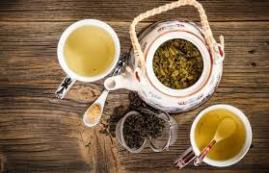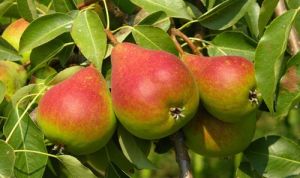THE MAGIC OF GREEN TEA: AN ANCIENT PANACEA FOR A MODERN WORLD
By Dustin Siena
Frequent trips to a franchise coffee house to pick up a tall late, with an extra couple shots of expresso seem to be a common phenomena these days. We simply cannot get enough stimulation. Our minds must exceed the speed that we weave in and out of traffic on the freeway at, as our caffeine concentrated bloodstream delivers the much needed jolt of this wide consumed drug to all the organs throughout our body. Whether your vice is coffee or cola, they both share something in common.
They both contain an extremely high level of one of the most powerful drugs that we covet. Caffeine. Everybody craves it, and small fortunes are being made in exploiting it.
But could there be another, more healthier source of caffeine ? One that could perhaps nurture our soul, strengthen our body, open our hearts, and make us taller, stronger, faster, and better looking during the process ?
The Answer: Think Green Tea
With the advent of technology, our quest for speed and stimulation has reached epidemic proportions. Consumer expectation has driven us to work harder, faster, and more efficiently. In this age of the information superhighway, as we have more access to advanced information and technological wizardry, we seem to somehow become disconnected from the wisdom of our ancient ancestors. Their invention and adaptability to their environment existed without the creature comforts that we have come to consider basic necessity.
Green Tea: A Sensory Pleasure
Nature has given us an extraordinary substance which can give us a different kind of stimulation. A feeling which is pleasurable to the senses, without producing edginess. We can elevate our awareness and consciousness, without making ourselves nervous. We can expand our imagination and possibility, solve complex problems, in a patient and joyful manner. This substance will even nourish our nervous systems, so as to prevent over stimulation. We can detach ourselves from the limitations of negativity, and negative thoughts and feelings. We can utilize this nourishment to be reflective and meditate, or engage in activity, whether physical or mental. This is just one effect that Green Tea, (Camillia Sinsensis) can provide to our spirit.
Tea: The most popular beverage in the world.
While it is common fact that tea is the most widely drank substance in the world, unfortunately, this type of tea is black tea. While Black Tea does possess health benefits, superior to coffee, it does not have the powerful health benefits of Green tea.
History
There is a myriad of mythology surrounding the discovery and wide spread usage of tea, throughout the world. While the history varies from culture to culture, since the focus of this information relates to Chinese Medicine, we shall focus on the history and mythology, as it has evolved from ancient China.
One of the great heroes of Chinese Medicine, is a man by the name of Shen Nong. He is considered the father of Chinese herbology, and was also an Emperor of China, about during the time of Moses. During his life, he often boiled his water before he drank it. He believed this to be the best way to drink water. One day, a leaf from a nearby bush accidentally fell into his pot of boiling water. He was so happy with the decoction that he had drunk, and thought it to be a great improvement from just plain boiling water. This event is considered one of the pivotal events in Green Tea folklore,
Green Tea, Black Tea & Oolong Tea: What is the Difference?
Green Tea, Oolong Tea, and Black Tea, are all the same plant, Camillia Sinensis. What separates them in their color, aroma, taste, function, health benefits, and level of stimulation is the way in which they are processed.
Green Tea undergoes virtually very little processing after the fresh leaves have been plucked. Immediately, the enzymes need to be inactivated, which would otherwise auto-oxidize the tea, transforming the tea into Oolong or Black Tea. For Green Tea, the fresh tea leaves are usually steamed. This again prevents the leaves from oxidation, which would change their nature.
The difference with Black tea and Oolong Tea is that the leaves are allowed to oxidize. This transformation is produced in nature, by natural enzymes that occur in the leaves. In Black Tea, the oxidation process is lengthier than in Oolong Tea. Oolong Tea is just partially auto-oxidized. The practice of this process is actually recent, occuring in the mid-nineteenth century, making Oolong a recent creation in the tea world. Unfortunately, in both these teas, the auto-oxidation process that occurs destroys many of the polyphenols, which were originally present in the tea leaves. This degrades the Tea’s great health benefits. Also, in the oxidation process for both Black tea and Oolong Tea, the caffeine levels are increased, as the polyphenols levels are decreased, inversely. However, this oxidation process in Green Tea is inhibited, preserving all the healing substances found in the leaves, making Green Tea the highest in polyphenols, and the least in caffeine. Green Tea also has many other unique substances, which fortify its powerful therapeutic effect on the body, spirit, and mind.
A couple of words about Caffeine
In terms of Tea, Black Tea has been thought to have the highest caffeine content of all tea. This is actually untrue. Green tea has more caffeine. However it must be understood that the caffeine in Green Tea, because of the other compounds, functions in a very special and balancing way. The caffeine in Green Tea is surrounding by tannic acid compounds, which inhibit the caffeine from surging all at once into our bloodstream. In a sense, the caffeine in green tea is time released into our bloodstream. This time-release effect makes the stimulation that is experienced very gentle and pleasant. It also allows us to feel the effects of Green tea for an extended period of time, seeming to outlast the effects of our friends, who are drinking coffee or cola. The effect of Green Tea is free of agitation and nervousness, and it’s blissful stimulation feels good to our senses.
While there are probably many undiscovered ingredients in Green tea, there are some principal substances, which have been confirmed. Polyphenols, which are anti-oxidants, are one of the more well-known substances in Green Tea. It is thought that the various types of polyphenols in green Tea contribute greatly to the health benefits. The types of polyphenols can further be broken down into catechins. This represents over 30% of the contents found in Green tea. It has been found that the catechins in Green tea, in terms of anti-oxidant activity, are two hundred times stronger than that of Vitamin E.
ECGG (Epigallocatechingallate), one of the polyphenols in Green tea, shares similar properties to that of aspirin. It can prevent the accumulation of platelets from causing obstruction in the veins. This ability to prevent blot clotting can be effective in prevention of cardiovascular anomalies such as heart attacks, and strokes.
ECGG has also has been found to have a profound impact on stopping the formation of Lung Cancer in Japan. Those who smoke might consider drinking Green Tea, as an adjunct, to prevent future illness.
Diabetics and those wishing to keep their blood sugar levels in check should consider consumption of Green tea. ECGG can also help regulate blood sugar levels. .
The polyphenols can help prevent the formation of plaque. It can help destroy the formation of Streptococcus bacteria in the mouth. In combination with the flouride, and Vitamin C in Green Tea, this can serve as an invaluable ally in the fight against gum disease, cavities, and tooth decay.
Some other active ingredients include:
Flouride: Up to 1 mg can be found in a cup of Green Tea. This mineral can strengthen bones and teeth, and help prevent the cavity formation.
Aluminum: Trace amounts can help create a buffer against gastric acids which can help prevent and treat stomach maladies such as irritation and heartburn
Manganese: Can help strengthen bones, and enhance our ability to absorb calcium. Many people with osteoporosis can benefit from the naturally occuring manganese in Green tea.
Tannic Acid Compounds: This bitter substance helps slow down the release of caffeine in Green Tea. This is what allows Green Tea to produce such a gentle and smooth stimulation. Tannic acid can also help remove toxins from our intestines and stomach.
Saponins: These substances are quite effective in preventing fats from entering into our blood stream. This is helpful in lowering cholesterol, and staying fit. Green Tea is used in many thermogenic formulas to help people lose weight. Part of this function comes from the saponins ability to enhance fat metabolism. This is one of the reasons Green Tea is a powerful catalyst in weight-loss programs.
Thiamine: Considered a B vitamin, this substance can help induce a joyful state, alleviating stress, and almost acting as a slight narcotic. In combination with the caffeine, this is what allows Green tea to produce such a unique and euphoric state.
Vitamin C: Adequate amount of Vitamin C are found in Green tea, resistant to the heat, which usually it is vulnerable to. Increasing collagen synthesis, having anti-inflammatory effects, lowering LDL cholesterol, and strengthening our immune system, all are effects of Vitamin C. Vitamin C also has a protectant effect upon our gums, preventing gingivitis.
Theanine: This amino acid constitutes about half of the amino acid profile in a cup of Green Tea. This not only makes Green tea delicious and aromatic, but also allows better absorption of the antioxidants in the tea, polyphenols. According to research, theanine has been found to enhance some anti-cancer drugs, while reducing side effects.
Aromatic Oils: The aromatic oils provide us with the delicious taste, and aroma that makes Green Tea so wonderful. They also help induce a blissful state of worry-free feelings, softening the effect of the caffeine. This is why it is important to never use boiling water on top of Green tea leaves. This destroys many of the valuable substances, including the aromatic and volatile oils, which are essential.
Health Benefits

Simplicity is always dynamic. Drinking Green Tea throughout the day has a positive impact on virtually every system in your body including: cardiovascular, circulatory, respiratory, nervous, lymphatic, immune, urinary-genital, and musculoskelatal systems. Few substances can boast the broad-spectrum impact that Green Tea has on our bodies and spirits.
Regulating cholesterol levels, increasing HDL levels (the “good” cholesterol), and lowering LDL levels (the “bad” cholesterol), will protect our hearts. Preventing blood clots will maintain the smooth flow of blood through our veins, preventing strokes, angina, and heart attacks.
Through its bitter substances, Green tea harmonizes our digestion, balances our intestines and stomach, and aids our digestion.
Green tea has substances which help destroy harmful bacteria, viruses, and fungi. This keeps our immune systems toned, constantly working at its optimal level.
Green tea strengthens our teeth and bones, preventing us from future maladies such as osteoporosis, and tooth decay.
Substances in Green tea help us stay fit, by metabolizing fat. By preventing obesity, we help ward off a plethora of diseases, which are secondary to obesity.
 Producing a state of clarity, and divine inspiration without jitters, Green tea keeps us happy and positive. The happier we are, the more endorphins and enkephalins we produce. These are the feel good neuro chemicals that are produced when we fall in love, eat chocolate, and laugh!
Producing a state of clarity, and divine inspiration without jitters, Green tea keeps us happy and positive. The happier we are, the more endorphins and enkephalins we produce. These are the feel good neuro chemicals that are produced when we fall in love, eat chocolate, and laugh!
Green tea also maintains a youthful appearance, tightening the skin, protecting our skin from harmful ultraviolet sunrays, keeping us youthful.
Tea Bags vs. Bulk

To engage in the ultimate and complete Green tea experience, please do not use tea bags. The aroma, vitamin and mineral content is simply lacking. The idea that using tea bags is better than not drinking green tea at all is not a sound argument. You must use fresh leaves in order to benefit fully.
Bulk Green tea can be purchased at your local Chinatown, or mail order. While there are endless varieties of Green Tea from different farmers, regions, and grades, my personal favorite is Lung Ching (“Dragon’s Well”). This is one of the most famous Green Teas. This is a Chinese version, whereas in Japan, Matcha is one of more popular Green teas.

There are many other varieties of Green Tea, just as there are endless types of wine, which can further be broken down into red, white, and blush. Tea can generally be broken down into Green, Black, and Oolong. And within each category, there are the very basic, and then there are the very expensive connoisseur teas. These are wonderful to share with loved ones, and on special occasions, very much like the way you would save a special bottle of wine for something important and meaningful. The beauty of tea is that at most tea shops, or at your local China Town, you can ask for an ounce of a very expensive tea, that would normally cost $ 500 per pound. It may only cost you $ 5 to sample this sublime substance.
I would recommend starting with Lung Ching, which generally costs about $ 30 for a pound. This will last for a while, and should be stored in a sealed vat, away from heat. And since each teaspoon can generally be brewed 3-4 times, tea is extremely economical.
This is a complex area, which depends largely on the desired effect you wish to achieve (stimulatory or calming, mild taste or strong). There are actually different styles of preparing Green Tea.
For a Stimulating Effect

If you wish to have a stimulating cup of fresh Green Tea, use 1 teaspoon of leaves into one cup of 140 Degree Farenheit, hot water. After boiling the water, letting the water cool for about 5 minutes, usually does the trick. Let the first batch steep for ninety seconds. You can let it steep for up to three minutes, for a stimulating effect. However, the Japanese tend to look down upon brewing tea for this long. They prefer no longer than ninety seconds. You can experiment trying anywhere between ninety seconds, up to three minutes of steeping time.
To Have a Relaxing Effect

Let boiling water cool for about five minutes. Then pour the water (about 140 F), onto 1 teaspoon of leaves. Let it steep for about sixty seconds, and then immediately pour out the tea. Repeat the same step again, but this time let the tea steep for about 3 minutes. This method tends to accentuate the tannic acid content, which inhibits the caffeine. This is a nice method to use before meditation, or even sleep.
Longevity & Happiness

As you venture into the world of tea, a magical kingdom of bliss awaits you. Your overall quality of well being will increase, and you will gradually notice changes in virtually all facets of your life. I encourage you to try different varieties of Green Tea. Like wine, tea is very personal to the individual.
You will be pleasantly surprised as to how integrating Green tea into your life not only expands the level of possibility throughout your life, but also extends your longevity so that you can realize all your dreams, and fulfill them.
By Dustin Siena, L.Ac.
Copyright Dustin Siena 2002





































































